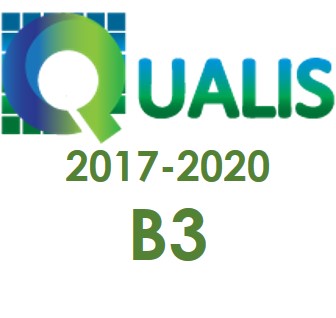THE THE NOVEL "A HISTÓRIA DO AMOR DE FERNANDO E ISAURA" IN DIALOGICAL RELATIONSHIPS: FROM THE MEDIEVO TO THE NORTH-EAST
DOI:
https://doi.org/10.22481/folio.v12i1.6622Keywords:
Relações dialógicas, Romance, Ariano Suassuna, Cultura popularAbstract
This research deals with the dialogical path that constitutes the formation of the novel A história do amor de Fernando e Isaura (1994), by Ariano Suassuna, based on Bakhtin (2014) for whom the novel is a social diversity of languages organized artistically, by languages and individual voices. The study of dialogical relations is an indispensable condition for understanding the meanings that determine the discourse of a genre, in a dialogical perspective. In view of this, the relationships that organize and constitute the novel by Fernando and Isaura are investigated, so that the objective of this research is to understand how dialogical relationships contribute to the formation and understanding of the meanings in a novel. In function of the object of study, a research of descriptive-interpretative method of qualitative approach is developed, however, the analyzes take as a theoretical-methodological basis, the Dialogic Theory of Language. The theoretical assumptions are the literary review of Bakhtin's works (2011, 2014 and 2015) and Bakhtin / Volochínov (1981). It is understood that the novel can mix, mix and pluralize voices and that the dialogic character that constitutes it, places its languages face to face with the social and real context of the language, through the interaction of spaces and discourses. Fernando Isaura's prosaic novel is synonymous with renewing meanings, since it represents the activity of Suassunian writing and seeks to rescue elements of erudite culture in the novels Tristan et Iseut (1903), by Béroul and Tristão and Iseu (1976), by Joseph Bédier (translated version by Afrânio Peixoto), extolling the popular northeastern imagination.
Downloads
References
2. ______. A cultura popular na Idade Média e no Renascimento: o contexto de François Rabelais. São Paulo: Hucitec, 2013.
3. ______. Questões de literatura e de estética: a teoria do romance. 6. ed. São Paulo: HUCITEC, 2014.
4. ______. Problemas da poética de Dostoiévski. Tradução de Paulo Bezerra. 5. ed. Rio de Janeiro: Forense Universitária, 2015.
5. BÉDIER, Joseph. Tristão e Iseu. Versão Afrânio Peixoto. 5. ed. São Paulo: GRD, 1976.
6. BÉROUL. Tristan et Yseut. Paris: Librarie de Firmin Didot et Cia, 1903.
7. CUNHA, Antônio Geraldo da. Dicionário etimológico Nova Fronteira da língua portuguesa. Rio de Janeiro: Nova Fronteira, 1982.
8. FERREIRA, Aurélio Buarque de Holanda. Dicionário da língua portuguesa. 5. ed. Curitiba: Positivo, 2010. 2222 p. ISBN 978-85-385-4198-1. Disponível em: <https://contas.tcu.gov.br/dicionario/home.aspv> Acesso em: 25 abr. 2020
9. MOREIRA, Aline Leitão. Tristão e Isolda: em torno do que remanesce. 2010. Dissertação de Mestrado em Letras. Universidade Federal do Ceará – UFC, Fortaleza, CE, 2010. Disponível em: <http://www.repositorio.ufc.br/ri/bitstr eam/riufc/2806/1/2010_DIS_ALMOREIRA.pdf>. Acesso em: 25 abr. 2020.
10. SUASSUNA, Ariano. A arte popular no Brasil. Rio de Janeiro: Revista Brasileira de Cultura, 1969 nº 2, p. 37-43.
11. ______. O rico avarento. In: ______. Seleta em prosa e verso. Rio de Janeiro: José Olympio Ed., 1954. p. 5- 16.
12. ______. A onça castanha e a ilha Brasil: uma reflexão sobre a cultura brasileira. 1976. 200 f. Tese (Livre docência) – Centro de Filosofia e Ciências Humanas, Universidade Federal de Pernambuco, Recife, 1976.
Downloads
Published
Issue
Section
License












